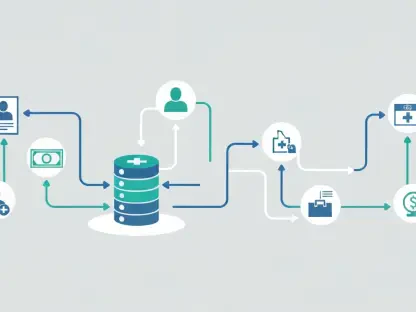A groundbreaking, high-performance JavaScript framework emerged that promises to reshape the landscape of cross-platform application development. ByteDance (the company renowned for TikTok) unveiled Lynx—an open-source, multi-platform framework that enables developers to construct native mobile applications using JavaScript. Lynx uses Rust-based tools and a dual-threaded UI engine to make apps look smoother, load faster, and work better. It allows web developers to create apps for iOS and Android, trying to rival well-known tools like React Native and Flutter.
As an IT leader, staying on top of emerging technologies will help you spark innovation and help accelerate development success. Read on to inform your efforts and explore how:
You can set your team up for excellence with production-ready innovation;
Lynx’s dual-threaded design improves responsiveness;
Your team can make the most of framework-agnostic capabilities;
And more.
Production-Ready Innovation in a High-Traffic Environment
Lynx is not a mere experimental project hosted on GitHub; it is a production-ready framework that has already been deployed in high-traffic applications at ByteDance. Although Lynx does not power the main TikTok app, it powers features such as the search panel, TikTok Studio, and several auxiliary applications. The decision by ByteDance to develop a new framework instead of relying solely on established solutions is grounded in the need for superior performance enhancements.
This emphasizes measurable improvements in speed and efficiency that are vital for applications operating at scale. It results in a framework that addresses performance bottlenecks seen in single-threaded architectures and responds to the increasing demand for more reliable mobile applications.
Technical Architecture and Dual-Threaded Design
At the heart of Lynx lies a dual-threaded architecture that separates user code from framework code. This design is different from older systems that use a single-threaded bridge, which has often caused performance problems.
In this new model, the main thread, powered by PrimJS—a module built on QuickJS, a compact JavaScript engine of only 210 KB—manages synchronous user interface tasks such as event handling and layout rendering. On the other hand, user code runs on a different thread, so slow or inefficient code won’t hurt the app’s performance.
This separation results in the immediate rendering of the first frame which effectively eliminates the blank screens that can occur during app startup. The dual-threaded approach enhances responsiveness and provides a more seamless experience for end users, thereby supporting the demand for instantaneous interactions in modern applications.
Framework-Agnostic Capabilities and Modern Styling Features
Lynx offers a high degree of flexibility by remaining agnostic toward the choice of UI frameworks. Unlike tools that force you to use one specific setup, Lynx allows your IT teams to work with different frameworks like Svelte, along with its built-in JavaScript features.
The framework supports native CSS features for styling, including transitions, animations, variables, and gradients, which simplifies the process for web developers accustomed to these standards. This native support will enable your teams to leverage familiar styling techniques and tools such as Tailwind CSS, thereby reducing the learning curve and accelerating development cycles.
The ability to use conventional CSS ensures that the design process remains intuitive, while the robust rendering engine guarantees that the user interfaces remain crisp and responsive across different devices and platforms.
Integrating AI Tools and Future Code Modernization
Lynx’s potential goes beyond its technical design, helping modernize code and improve efficiency with AI tools. For example, Sonar Source—an AI-powered code review assistant—gives instant feedback on pull requests, finds issues like bad code style or missing tests, and suggests quick fixes to improve code quality. These tools understand the whole codebase, making it easier to rewrite or update existing projects to use Lynx’s features.
The use of AI tools in development is part of a bigger trend in software engineering, where fast frameworks and smart automation are boosting productivity. Sonar Source is one way to get the most out of Lynx as it combines automated code review tools with modern frameworks like Lynx. This shows how software development is changing, making it easier to connect advanced technology with real-world coding needs.
Evaluating the Impact and Future Prospects of Lynx
Lynx has emerged as a technology with considerable potential, one that may prompt widespread adoption and necessitate the rewriting of existing codebases to take full advantage of its performance and flexibility. The framework’s dual-threaded architecture and native support for modern styling techniques present a compelling case for its use in high-performance mobile applications.
At the same time, the current limitations in ecosystem maturity require developers to invest additional effort in tool development and integration, a challenge that is likely to be addressed as the framework gains traction in the developer community.
The demand for more efficient, responsive, and versatile development tools is pushing forward innovation. That’s why ByteDance decided to invest in Lynx.
Moreover, the focus on performance enhancements and smooth user experiences meets the growing needs of end users, expecting applications that are fast and clear in design and reliable across multiple platforms,
Lynx stands as a promising addition to the wide range of tools available to developers, one that could shape the future of mobile application development in the coming years—and position your teams for excellence.
Conclusion
Lynx is a big step forward for JavaScript frameworks, combining speed, modern styling, and cross-platform flexibility that could change how mobile apps are built. By using a dual-threaded design, Lynx keeps UI tasks separate from user code, fixing many performance issues found in older tools. Its support for native CSS and ability to work with different frameworks make it especially appealing to web development teams who want to build native-like apps using tools they already know.
While Lynx still needs to grow its ecosystem and improve platform-specific tools, its strong technical features and use in high-traffic apps at ByteDance show its potential. Adding advanced tools, like AI-powered code review assistants, makes switching to Lynx even more attractive. As IT teams test Lynx and work on its current limits, it’s likely to become a key player in cross-platform app development.
Mobile app creation is changing fast, and Lynx shows where things are headed. With its focus on speed, efficiency, and smooth user experiences, Lynx gives a preview of the future—where apps are built quickly, look great, and work seamlessly across devices. As Lynx continues to grow, supported by a strong developer community and new tools, it’s set to become a major competitor in the world of JavaScript frameworks, pushing mobile technology forward.









